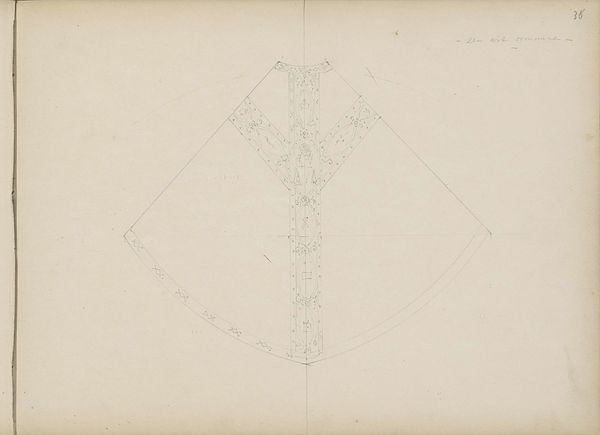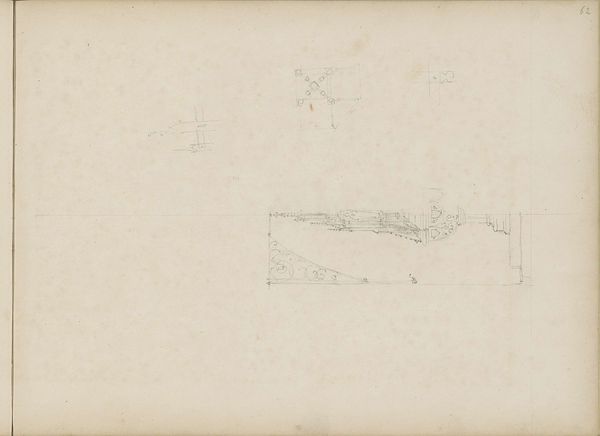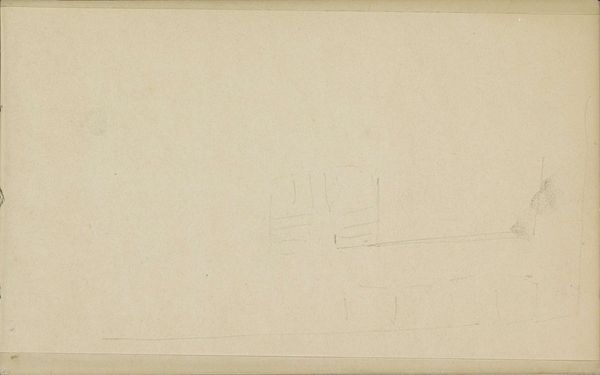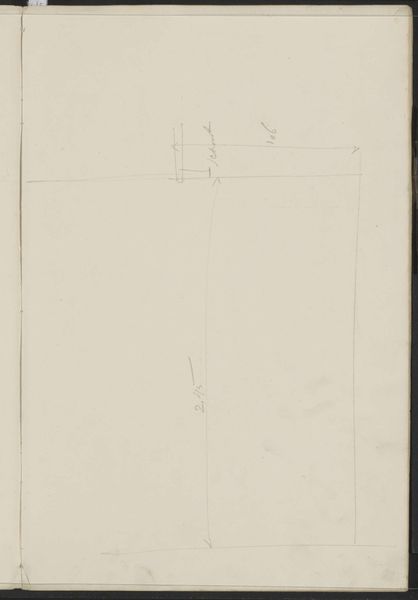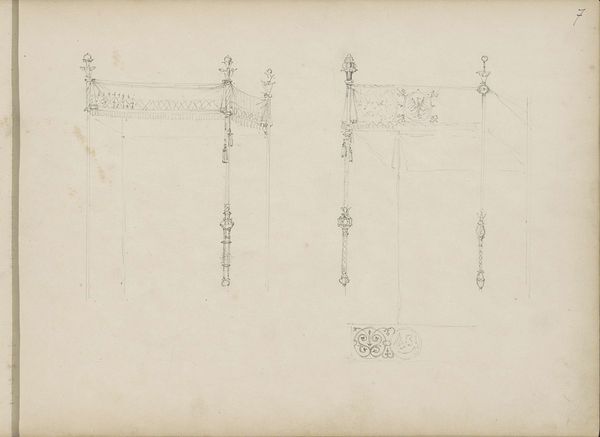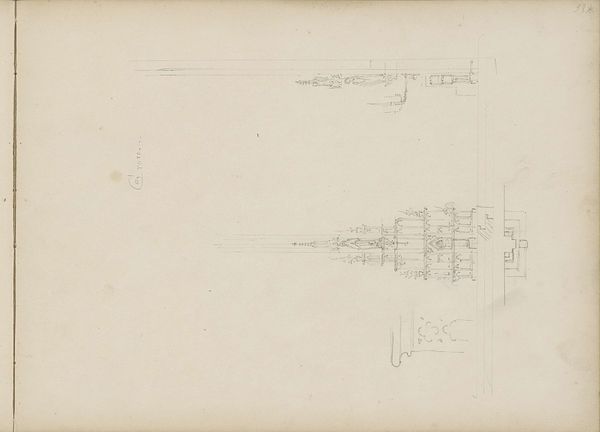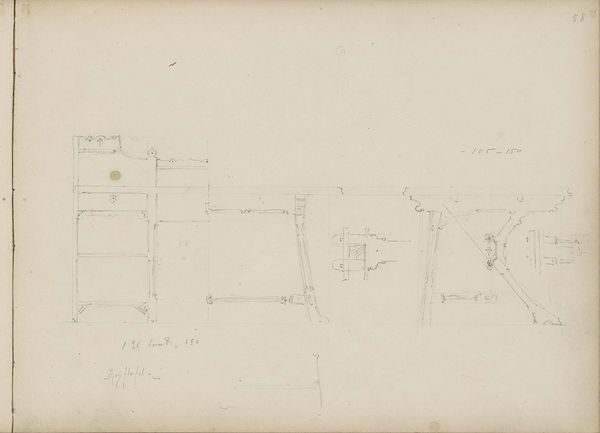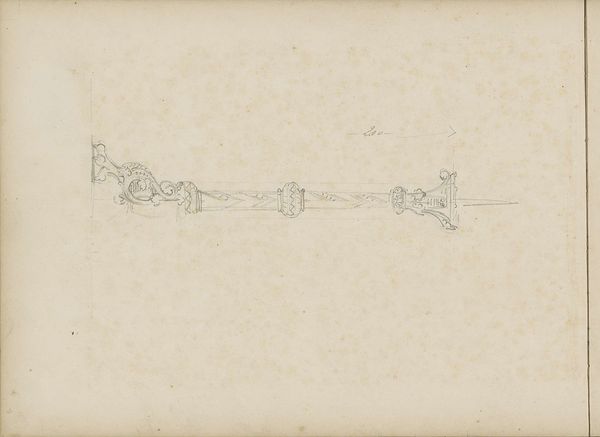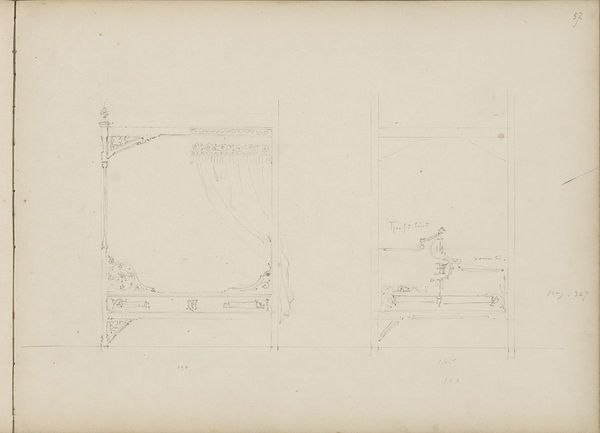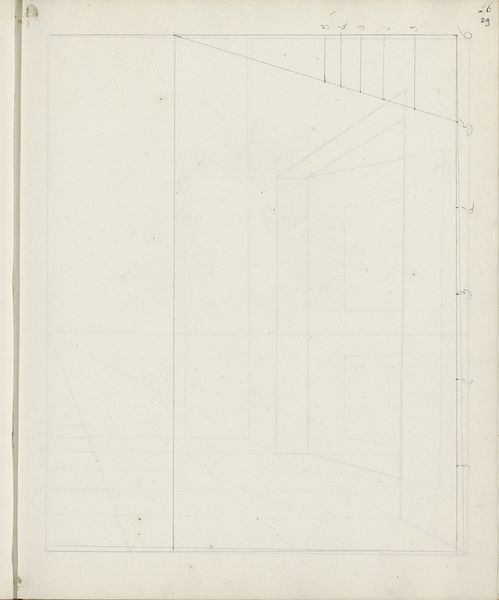
drawing, paper, pencil
#
drawing
#
paper
#
form
#
geometric
#
pencil
#
line
Copyright: Rijks Museum: Open Domain
Editor: Here we have Pierre Joseph Hubert Cuypers’ “Kruis,” created between 1857 and 1859. It's a pencil drawing on paper, currently residing in the Rijksmuseum. It strikes me as almost skeletal, a blueprint rather than a finished artwork. What do you make of it? Curator: This is fascinating as a material object, a glimpse into Cuypers' process. Look at the delicate pencil lines, the way they map out a design. Consider paper itself: Where was this paper made? By whom? Was it mass-produced, or carefully hand-crafted? These material conditions shaped Cuypers’ artistic decisions. Editor: That's a perspective I hadn't considered. I was so focused on the geometric simplicity, the pure form. But thinking about the paper and pencil – how does that affect how we understand his design? Curator: It invites us to question the hierarchy between "high art" and craft. A drawing like this blurs the lines. It speaks of labor, not just Cuypers' artistic vision, but the labor of those who produced the materials he used. It shows that architectural creation relied on far more than the individual artistic gesture. It’s about acknowledging the larger system of production behind every ‘masterpiece’. What does the geometric austerity, drawn so meticulously, convey to you? Is there perhaps an influence here in making architectural art more attainable? Editor: I suppose it makes it seem less… untouchable. More about accessible design and deliberate construction. Thank you. It's incredible how focusing on the materiality opens up such a different reading. Curator: Exactly! Considering materials transforms how we view art history, decentering the artist as the sole creator, instead accounting for a social network and an ecology of resources, processes, and people. What will you look for next time you analyze an architectural drawing?
Comments
No comments
Be the first to comment and join the conversation on the ultimate creative platform.

